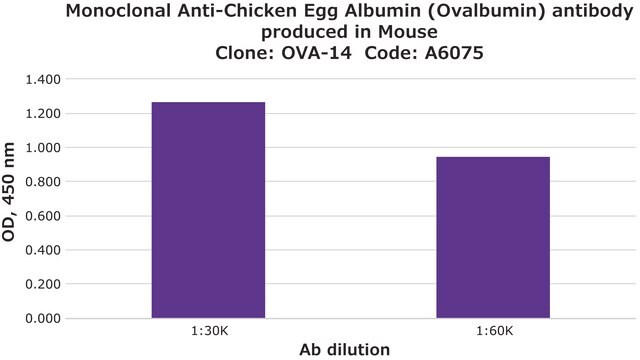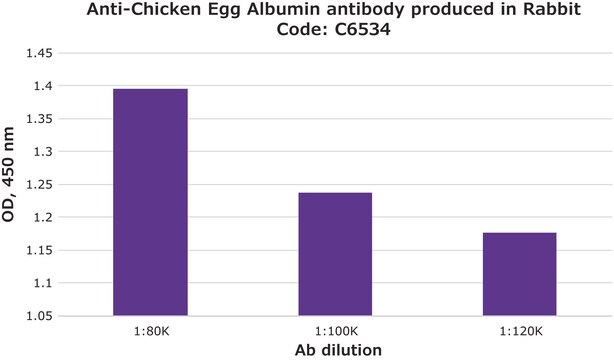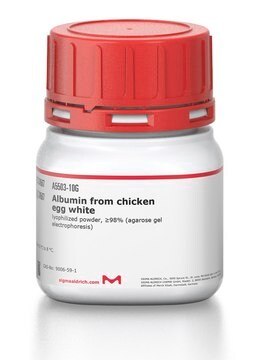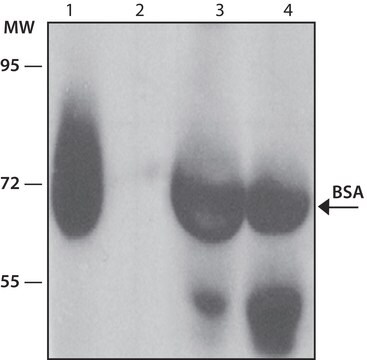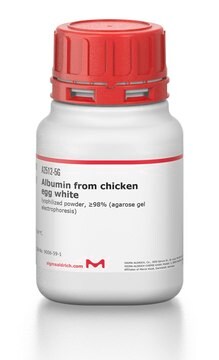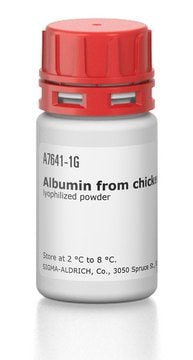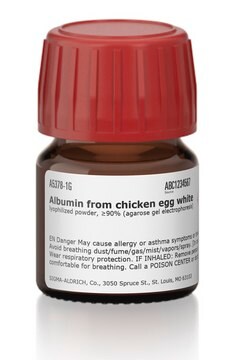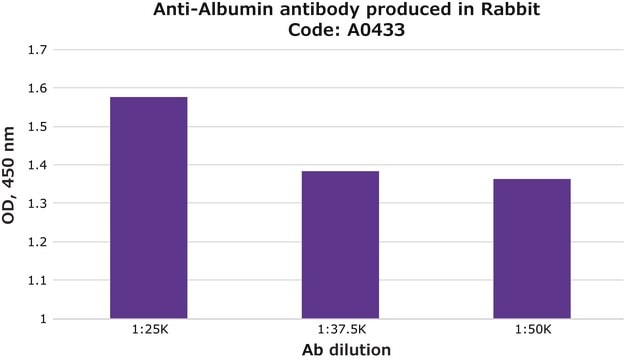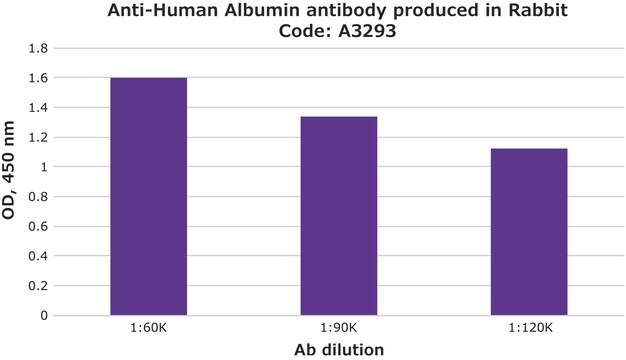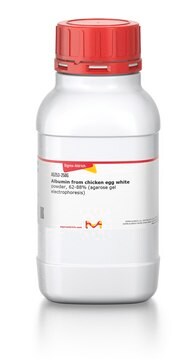SAB4200702
Anti-Chicken Egg Albumin (Ovalbumin) antibody, Mouse monoclonal
clone OVA-14, purified from hybridoma cell culture
Sinónimos:
Albumin, Plakalbumin, chicken egg
About This Item
Productos recomendados
origen biológico
mouse
Nivel de calidad
forma del anticuerpo
purified immunoglobulin
tipo de anticuerpo
primary antibodies
clon
OVA-14, monoclonal
Formulario
buffered aqueous solution
mol peso
antigen 45 kDa
reactividad de especies
chicken, turkey
concentración
~1 mg/mL
técnicas
competitive inhibition ELISA: suitable
dot blot: suitable
immunoblotting: suitable
indirect ELISA: 0.1-0.2 μg/mL using 10 μg/mL Albumin from chicken egg white (A5503) for coating.
isotipo
IgG1
Condiciones de envío
dry ice
temp. de almacenamiento
−20°C
modificación del objetivo postraduccional
unmodified
Información sobre el gen
chicken ... Oval(396058)
Descripción general
Ovalbumin (323-339) is the most abundant egg white protein surrounded by B-cell epitopes, which are bound by specific IgE antibodies. In addition, it also contains CD4+ T cell epitopes. Ovalbumin is a monomeric protein with a molecular mass of 45000Da.
Inmunógeno
Acciones bioquímicas o fisiológicas
Forma física
Almacenamiento y estabilidad
Otras notas
Cláusula de descargo de responsabilidad
¿No encuentra el producto adecuado?
Pruebe nuestro Herramienta de selección de productos.
Código de clase de almacenamiento
10 - Combustible liquids
Punto de inflamabilidad (°F)
Not applicable
Punto de inflamabilidad (°C)
Not applicable
Elija entre una de las versiones más recientes:
Certificados de análisis (COA)
¿No ve la versión correcta?
Si necesita una versión concreta, puede buscar un certificado específico por el número de lote.
¿Ya tiene este producto?
Encuentre la documentación para los productos que ha comprado recientemente en la Biblioteca de documentos.
Los clientes también vieron
Global Trade Item Number
| Número de referencia del producto (SKU) | GTIN |
|---|---|
| SAB4200702-100UL | 4061837861680 |
Nuestro equipo de científicos tiene experiencia en todas las áreas de investigación: Ciencias de la vida, Ciencia de los materiales, Síntesis química, Cromatografía, Analítica y muchas otras.
Póngase en contacto con el Servicio técnico